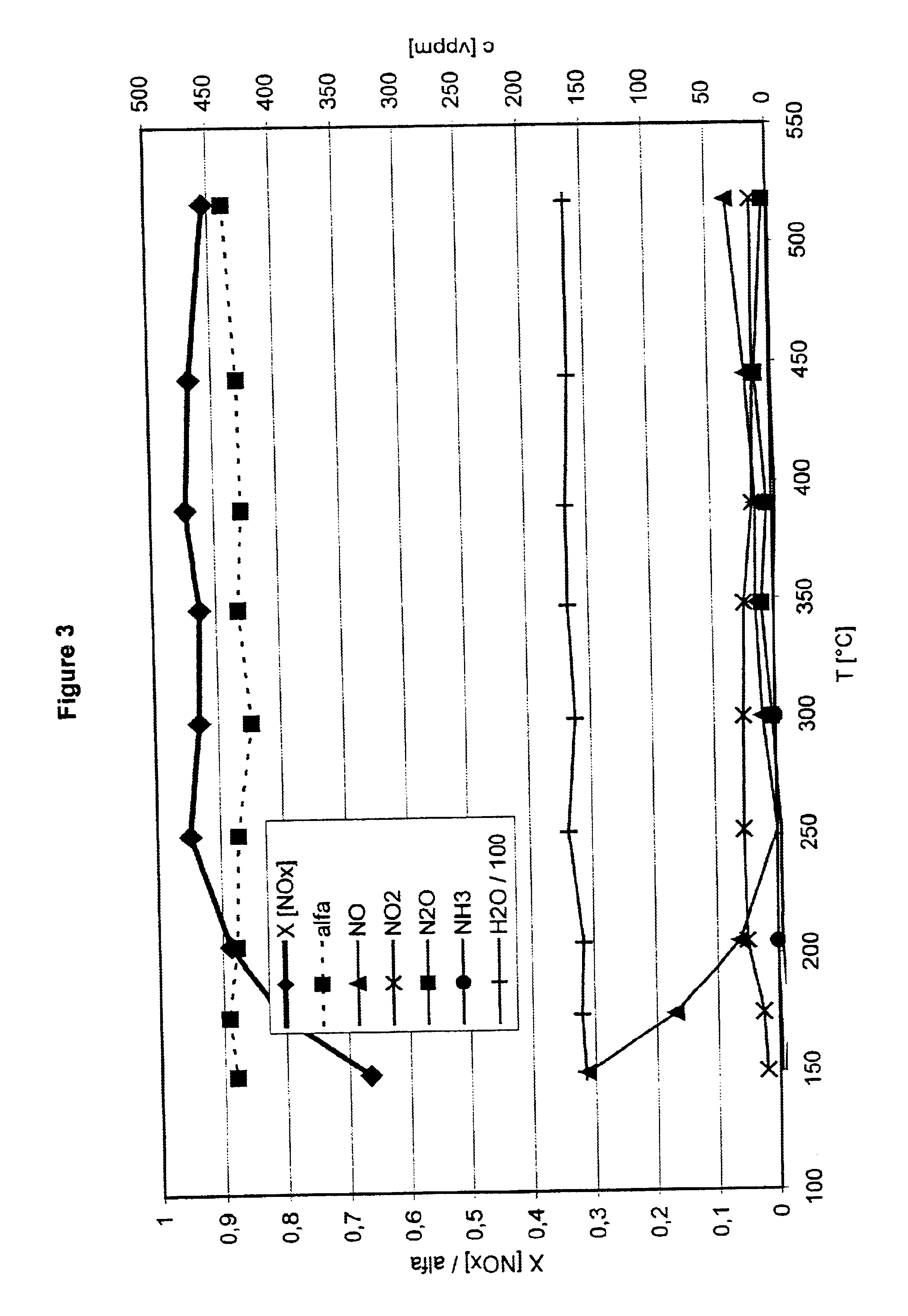Process and catalyst for reducing nitrogen oxides
a technology of nitrogen oxides and catalysts, which is applied in the direction of nitrogen purification/separation, inorganic chemistry, exhaust treatment, etc., can solve the problems of toxic vanadium compounds at elevated exhaust gas temperatures, high catalyst activity, and high catalyst age, so as to reduce improve the activity of reduction catalysts , the effect of reducing the age of catalysts
- Summary
- Abstract
- Description
- Claims
- Application Information
AI Technical Summary
Benefits of technology
Problems solved by technology
Method used
Image
Examples
example
Drilled cores of these catalysts with a diameter of 2.54 cm and a length of 7.62 cm were subjected to the following synthesis gas mixture at a space velocity of 30000 h−1 to test them in the process according to the invention:
500Vol. ppm nitrogen oxides in the ratio NO:NO2 of 1:1;3:1 and 1:3450Vol. ppm ammonia5Vol. % oxygen1.3Vol. % water vapourRemainder, nitrogen
The temperature of the synthesis gas was increased in steps from 150 to 525° C. For each temperature step, the gas composition was analysed downstream of the reduction catalyst.
FIG. 3 gives the results for a freshly prepared catalyst. The volume ratio NO / NO2 in this case was 1:1.
FIGS. 4 to 6 show the experimental results for aged catalysts. To age the catalysts, they were stored for a period of 48 hours under hydrothermal conditions at a temperature of 650° C.
FIG. 4 shows the results for a volume ratio NO / NO2 of 3:1, FIG. 5 for a volume ratio NO / NO2 of 1:1 and FIG. 6 for a volume ratio NO / NO2 of 1:3. As can be seen from the...
PUM
| Property | Measurement | Unit |
|---|---|---|
| temperatures | aaaaa | aaaaa |
| temperatures | aaaaa | aaaaa |
| concentration | aaaaa | aaaaa |
Abstract
Description
Claims
Application Information
 Login to View More
Login to View More - R&D
- Intellectual Property
- Life Sciences
- Materials
- Tech Scout
- Unparalleled Data Quality
- Higher Quality Content
- 60% Fewer Hallucinations
Browse by: Latest US Patents, China's latest patents, Technical Efficacy Thesaurus, Application Domain, Technology Topic, Popular Technical Reports.
© 2025 PatSnap. All rights reserved.Legal|Privacy policy|Modern Slavery Act Transparency Statement|Sitemap|About US| Contact US: help@patsnap.com



